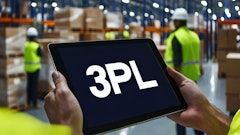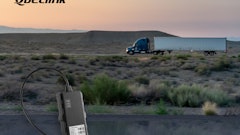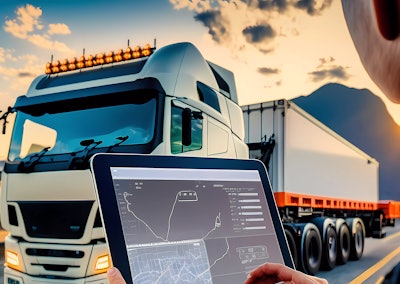
Just a decade ago, dispatchers relied on tribal knowledge and phone calls to guide drivers through their routes. Today, drivers pull up to the dock expecting the same seamless digital experience they get from consumer smartphone apps.
The gig economy has fundamentally reshaped driver expectations around workplace technology. Delivery apps established a new baseline for user experience that emphasizes speed, simplicity, and instant gratification. These consumer experiences have transferred to professional settings. Employees want onboarding that takes hours rather than days, flexible scheduling systems that accommodate independent contractors, and the ability to track performance, support, and earnings in a single platform.
For fleet managers this matters more than ever. Driver shortages reportedly cost the freight industry $95.5 million every week, with an estimated 24,000 unfilled positions leaving trucks idle across the country. To attract and retain talent, many organizations need a change that caters to a younger generation in the workforce.
The old model of multiple phone calls, paper-based processes, and manual route planning feels antiquated to drivers accustomed to instant updates and dynamic optimization. The World Economic Forum reports that Gen Z expects tech tools at work to match the ease of use of social media apps, which has created a new standard where the best driver apps deliver the same intuitive experience as an iPhone, with a consumer-grade design that eliminates friction from daily workflows.
What next-generation drivers demand from their tools
Simplicity and clarity top the list. Drivers want clear routing instructions and streamlined information about packages and recipients. This means eliminating confusion about tasks and reducing the cognitive load required to drive and complete deliveries.
Real-time updates are equally critical. Modern drivers expect dynamic rerouting based on traffic conditions, weather alerts, and customer communications. They want to know immediately when circumstances change rather than discovering problems after they’ve already lost time.
Offline functionality is another differentiator. Many platforms fail when drivers enter areas with poor connectivity, causing data loss and workflow disruptions. Systems that seamlessly transition between online and offline modes without losing information provide a substantial advantage.
Earnings transparency and gamification elements drive engagement. Drivers want to track their performance, understand their compensation in real-time, and see how route optimization affects their daily earnings. Some platforms incorporate dashboard features that let drivers monitor their progress and efficiency metrics.
Support and safety features are also essential. In-app help systems, incident reporting tools, and vehicle health tracking give drivers confidence that they can get assistance when needed without lengthy phone calls or complex escalation processes.
Technology as a talent advantage
Today's labor market is tight. Drivers have multiple employment options, and technology quality directly impacts recruitment and retention. Forward-thinking fleet operators recognize their platforms as a business tool for attracting talent.
Companies with modern, intuitive systems can onboard drivers faster, reduce training time, and achieve higher satisfaction scores in post-hire surveys. According to Ivanti, 55% of office workers say negative experiences with workplace technology impact their mood and morale, and the same principle applies to drivers.
Cloud-native platforms offer particular advantages because, unlike legacy systems built on older technology foundations, they can quickly adapt to changing requirements without extensive customization or bolted-on features. The architectural difference is like building a new house from scratch rather than continually renovating a shaky foundation – it enables faster innovation and more responsive user experience improvements
Independent contractors, who make up a significant portion of the delivery workforce, particularly value systems that give them autonomy while providing the support they need to maximize earnings. When drivers can efficiently manage their schedules, track their performance, and access support resources through a single, well-designed interface, they’re more likely to remain loyal to that carrier.
Evaluating technology for workforce appeal
Fleet managers considering new platforms should prioritize several key factors that directly impact driver experience and retention.
Mobile-first design should be authentic, not retrofitted. Platforms designed primarily for desktop use and later adapted for mobile often retain complex navigation structures and dense information displays that work poorly on smaller screens. True mobile-first systems prioritize the most important information and design workflows specifically for touch interfaces.
Integration capabilities are crucial for long-term success. As businesses grow, they need systems that can connect with customer platforms, accounting software, and other business tools. Modern APIs and pre-built integrations reduce implementation complexity and enable faster expansion into new markets.
Scalability considerations go further than just handling more drivers. Growing businesses need systems that can accommodate new service types, additional geographic markets, and evolving customer requirements without requiring complete platform changes.
User feedback and support quality indicate how well the vendor understands driver needs. Companies that regularly survey their users, implement requested features, and provide responsive customer service demonstrate a commitment to ongoing improvement.
A widening divide
The gap between driver expectations and fleet technology continues to grow. While consumer apps evolve monthly with new features and smoother interfaces, many transportation companies still operate on systems designed for a pre-smartphone world.
This creates a compounding problem in which younger drivers become more accustomed to seamless digital experiences in every other aspect of their lives, but outdated delivery platforms feel increasingly jarring by comparison. The driver who seamlessly navigates mobile apps isn’t going to tolerate a clunky dispatch system that requires multiple taps to complete basic tasks.
Companies that modernize now avoid a steeper climb later. The alternative is watching qualified drivers choose competitors that have invested in tools that respect their time and preferences.
![Pros To Know 2026 [color]](https://img.sdcexec.com/mindful/acbm/workspaces/default/uploads/2025/08/prostoknow-2026-color.mduFvhpgMk.png?auto=format%2Ccompress&bg=fff&fill-color=fff&fit=fill&h=100&q=70&w=100)
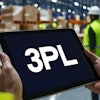





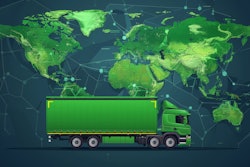
![Pros To Know 2026 [color]](https://img.sdcexec.com/mindful/acbm/workspaces/default/uploads/2025/08/prostoknow-2026-color.mduFvhpgMk.png?ar=16%3A9&auto=format%2Ccompress&bg=fff&fill-color=fff&fit=fill&h=135&q=70&w=240)
